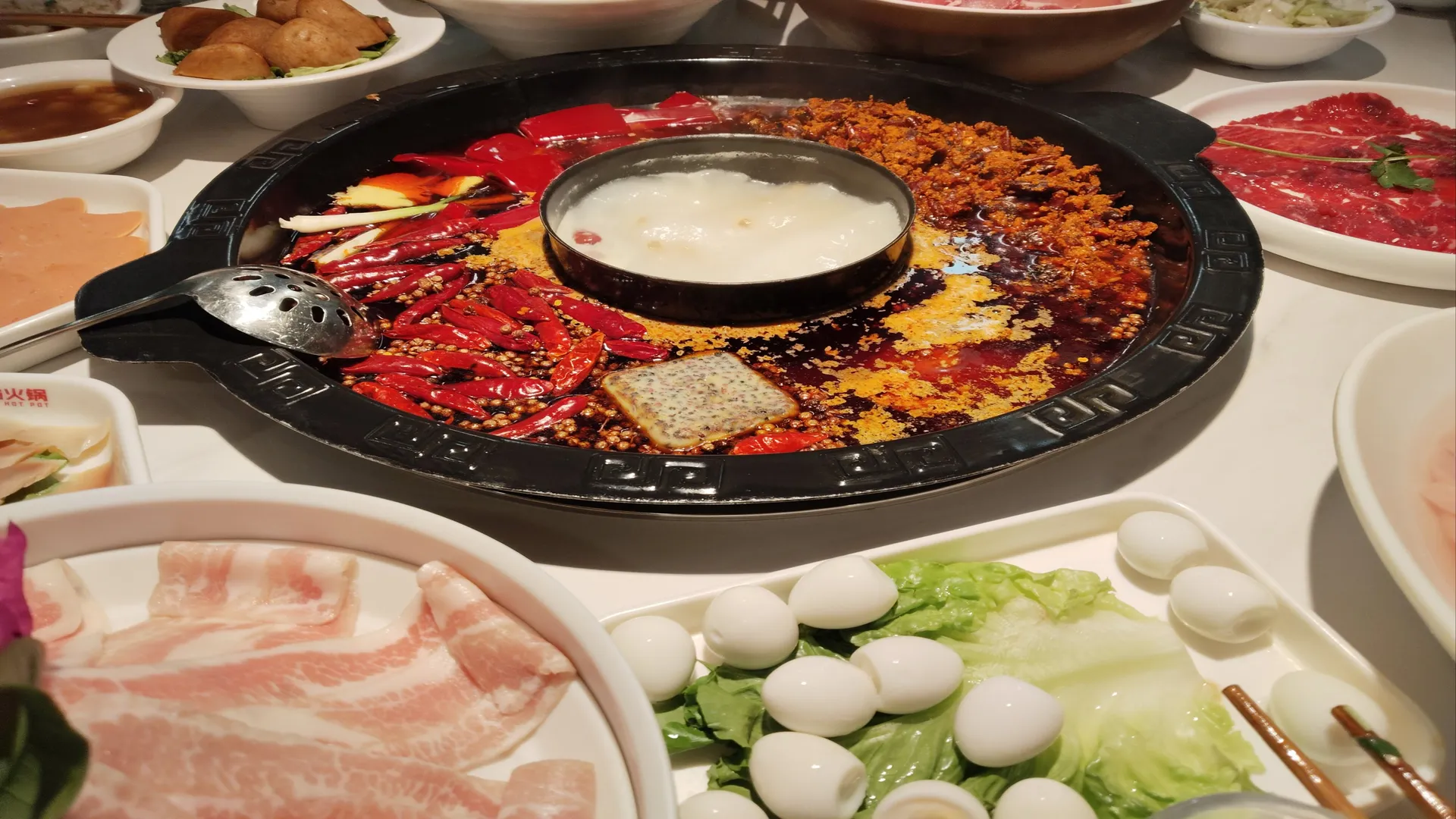The Art of Sichuan Hot Pot: A Culinary Journey from Chengdu
Introduction:
As a culinary practitioner deeply rooted in the heart of Sichuan cuisine, I am thrilled to share with you the essence of Chengdu’s iconic hot pot. This gastronomic delight is more than just a meal; it’s a cultural experience that encapsulates the fiery spirit of the Sichuan people. Let’s delve into the origins, cultural significance, ingredients, and the unique characteristics that make this dish a symbol of Sichuan’s culinary heritage.
Origins and Cultural Background:
The Sichuan hot pot, or “huǒguō” in Chinese, has a history dating back to the Han Dynasty, over 2,000 years ago. It was traditionally a communal dish, where families and friends would gather around a shared pot, cooking their favorite ingredients in a simmering broth. Over time, it has evolved into a symbol of togetherness and conviviality, reflecting the warmth and hospitality of the Sichuan people.
Ingredients and Preparation:
The soul of Sichuan hot pot lies in its rich, fragrant broth. Our secret? A labor of love that involves simmering a blend of Sichuan peppercorns, dried chilies, and various spices for a minimum of eight hours, transforming a simple stock into a complex, aromatic base. This broth, known for its非遗技艺 (intangible cultural heritage), is the foundation upon which the hot pot’s reputation stands.
The ingredients are just as important. We meticulously select fresh, high-quality produce such as “máodǔ” (tripe), “huánghóu” (cow’s throat), and “niúròu” (beef), which are essential for a traditional Sichuan hot pot. Each ingredient is cut to perfection, ensuring that they cook evenly and absorb the flavors of the broth.
Taste and Appearance:
Sichuan hot pot is a symphony of flavors – spicy, numbing, savory, and aromatic. The “málà” (spicy and numbing) sensation is a result of the Sichuan peppercorns, which create a tingling sensation on the tongue, while the dried chilies provide a deep, lingering heat. The broth’s richness is further enhanced by the addition of “niúyóu” (beef tallow), which melts into the broth, adding a layer of unctuousness that coats the palate.
Visually, a Sichuan hot pot is a feast for the eyes. The vibrant red broth, speckled with seeds and flakes from the peppercorns and chilies, contrasts beautifully with the whiteness of the beef tallow. The ingredients, arranged artfully around the pot, await their turn to be cooked, their colors and textures promising a culinary adventure.
Signature Dishes and Culinary Features:
In a Sichuan hot pot, there are no rules – only personal preferences. However, some dishes have become synonymous with the experience. The “máodǔ” and “huánghóu” are must-tries, as their textures are perfectly complemented by the broth’s intensity. The “niúròu” slices, when briefly cooked, offer a tender, succulent bite that melts in your mouth.
The culinary feature of Sichuan hot pot is its versatility. Diners can customize their experience by choosing from a variety of sauces and condiments, such as “yóu” (soy sauce), “cāngzhōu” (garlic), and “shuāngshí” (sesame paste), to create a personalized dipping sauce that enhances the flavors of their chosen ingredients.
Conclusion:
Sichuan hot pot is more than just a meal; it’s a journey through the rich tapestry of Sichuan’s culinary history. It’s a celebration of flavors, a testament to the region’s非遗技艺, and a communal experience that brings people together. As a practitioner, I am proud to carry on this tradition, ensuring that the art of Sichuan hot pot continues to delight and inspire generations to come.
